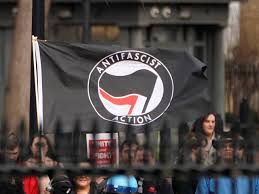Understanding Antifa: Origins, Goals, and Impact

Introduction
Antifa, short for anti-fascist, has emerged as a significant and controversial movement in recent years. Its roots can be traced back to anti-fascist groups in Europe during the early 20th century, but it has gained unprecedented visibility in the United States and around the world, particularly during protests against racial injustice and authoritarianism. Understanding Antifa’s ideals and methods is crucial for comprehending current social and political tensions.
What is Antifa?
Antifa is not a formal organisation but rather a loose network of individuals and groups united by a shared opposition to fascism, racism, and other forms of oppressive governance. Members often engage in direct action, which can range from peaceful protests to more confrontational tactics aimed at disrupting the activities of what they perceive as far-right groups.
Recent Events
In 2020, Antifa gained significant attention during the protests that erupted in response to the murder of George Floyd. The movement has been both praised for its anti-racist stance and condemned for its methods, which include counter-protests against right-wing extremist events and confrontations with law enforcement. Various cities reported clashes between Antifa activists and far-right groups, leading to heightened security concerns and intense public debate about the appropriateness of Antifa’s tactics.
Media Representation and Public Perception
The portrayal of Antifa in the media has varied widely, with some outlets framing the movement as a necessary bulwark against fascism, while others depict it as a violent or anarchistic group. This divide reflects broader political divides within society, where Antifa has become a symbol of the escalating culture wars in the United Kingdom and the US. Supporters argue that their actions are justified in confronting hate and promoting social justice, while critics claim that their methods undermine democratic values.
Conclusion
As Antifa continues to be a relevant force in socio-political landscapes, understanding its history and objectives is essential for a nuanced discussion about activism and resistance. The ongoing debates surrounding the group emphasize the importance of dialogue and understanding in a time of deep societal divides. Looking towards the future, the challenge will be reconciling the approaches of different activist groups while fostering a cooperative effort to address injustices without resorting to violence.
